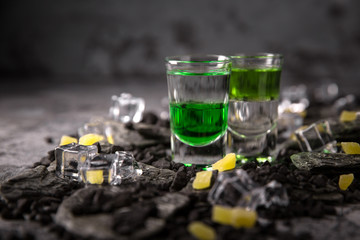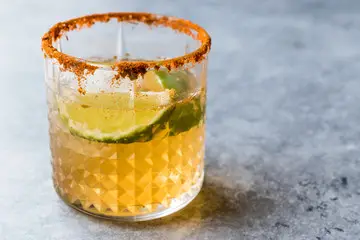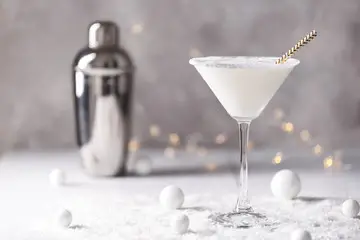
When it comes to making cocktails, can be an intimidating process for beginners. With so many unknowns from the spirits and mixers to the tools and techniques, it can be difficult to know where to begin.
Even if you don’t consider yourself to be a mixologist, you can still make delightful cocktails at home. This guide will take you step-by-step through the basics of making homemade cocktails, from understanding the different types of spirits and mixers to learning how to use the right tools and techniques.
You’ll also discover some of the best recipes to get you started. With the right knowledge and a few simple ingredients, you can impress your friends and family with delicious homemade cocktails in no time. So, let’s get started on your journey to becoming a master mixologist!
Beginners Guide To Homemade Cocktails
Essential Tools
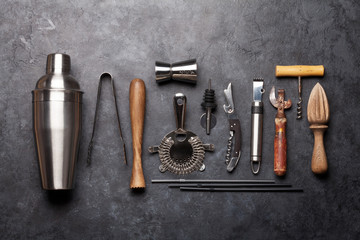
Shaker:
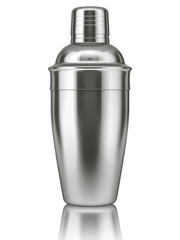
- There are two main types of shakers: the Boston shaker and the cobbler shaker.
- The Boston shaker consists of metal tins and a mixing glass. To use it, you’ll need to fill the glass with your ingredients, place the metal tin on top, and give it a firm tap to seal it. Then, simply shake the ingredients together and strain them into a glass using a strainer.
- The cobbler shaker is a more traditional, three-piece shaker that consists of a lid, a strainer, and a mixing tin. To use it, you’ll add your ingredients to the mixing tin, seal it with the lid and strainer, and shake as you would with the Boston shaker.
Strainer:
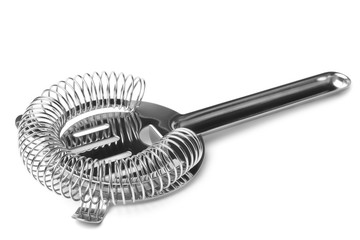
- There are two main types of strainers: the Hawthorne strainer and the julep strainer.
- The Hawthorne strainer has a spring-loaded design and is typically used with the Boston shaker. To use it, you’ll hold the strainer over your glass and pour the contents of the shaker through it, using the spring to catch any large pieces of ice or fruit.
- The julep strainer is a larger, bowl-shaped strainer that is typically used with a mixing glass. To use it, you’ll hold the strainer in one hand and a mixing spoon in the other, and use the spoon to push the ingredients through the strainer and into your glass.
Glassware:
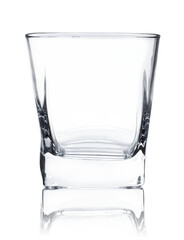
- There are many different types of glasses used for cocktails, including the martini glass, the rocks glass, the highball glass, and the champagne flute.
- The martini glass is a classic choice for cocktails served “up” (without ice), like martinis and Manhattans. It has a long stem and a conical shape, which helps to keep the drink chilled.
- The rocks glass, also known as a lowball glass, is a shorter glass with a wide rim and is typically used for cocktails served “on the rocks” (with ice). It’s a versatile glass that can be used for many different types of cocktails.
- The highball glass is a tall, slender glass that is often used for cocktails that are mixed with a larger proportion of mixer (like soda or juice).
- The champagne flute is a tall, narrow glass with a stem and is used for sparkling cocktails like Champagne cocktails or Bellinis.
Other tools:
- A jigger is a small measuring cup used to measure out precise amounts of alcohol for your cocktails.
- A muddler is a long, slender tool used to mash or crush ingredients (like fruit or herbs) in the bottom of a mixing glass.
- An ice bucket and tongs are essential for keeping your ice supply close at hand and for adding ice to your cocktails as needed.
Essential Ingredients
Alcohol:
- There are many types of alcohol that can be used in cocktails, including vodka, gin, rum, tequila, whiskey, and brandy. Each type of alcohol has its own unique flavors and characteristics, so it’s important to choose the right one for your cocktail.
- Vodka is a neutral spirit that is often used in cocktails like martinis and cosmopolitans.
- Gin is a juniper-flavored spirit that is often used in cocktails like martinis and gin and tonics.
- Rum is a sweet, tropical spirit that is often used in cocktails like mojitos and daiquiris.
- Tequila is a Mexican spirit that is often used in cocktails like margaritas and Palomas.
- Whiskey is a rich, amber-colored spirit that is often used in cocktails like Old Fashioneds and Manhattans.
- Brandy is a spirit made from distilled wine that is often used in cocktails like Sidecars and brandy Alexanders.
Mixers:
- Mixers are non-alcoholic ingredients that are used to balance out the flavors of the alcohol and add depth to your cocktails. Common mixers include juices (like orange juice, cranberry juice, and pineapple juice), sodas (like tonic water, ginger ale, and club soda), and bitters (like Angostura bitters and orange bitters).
- When choosing mixers for your cocktails, it’s important to consider the flavors of the alcohol and the overall flavor profile you want to achieve. For example, a sweeter alcohol might be balanced out by a tart mixer like cranberry juice, while a bold, juniper-flavored gin might be complemented by a refreshing mixer like tonic water.
Garnishes:
- Garnishes are decorative additions to your cocktails that add flavor and visual appeal. Common garnishes include fruit (like lemon wedges, cherry, and olives), herbs (like mint and basil), and spices (like cinnamon and nutmeg).
- When choosing garnishes for your cocktails, consider the flavors of the drink and how the garnish will complement or contrast those flavors. For example, a citrusy cocktail might be garnished with a lemon wedge, while a spicy cocktail might be garnished with a sprinkle of cinnamon.
Basic Recipes
Classic cocktail: Martini
- 2 oz gin
- 1 oz dry vermouth
- Orange bitters (optional)
- Lemon twist, for garnish
Procedure:
- Fill a mixing glass with ice.
- Add the gin and vermouth to the glass and stir until well combined.
- If using, add a few dashes of orange bitters.
- Strain the mixture into a chilled martini glass.
- Garnish with a lemon twist and serve immediately.
Fruity cocktail: Margarita
- 2 oz tequila
- 1 oz Cointreau or triple sec
- 1 oz lime juice
- Salt, for rimming the glass (optional)
- Lime wedges, for garnish
Procedure:
- Rim a rocks glass with salt (optional).
- Fill a shaker with ice.
- Add the tequila, Cointreau, and lime juice to the shaker.
- Shake well and strain into the prepared glass.
- Garnish with a lime wedge and serve immediately.
Low-alcohol cocktail: Spritz
- 1 oz Aperol
- 1 oz Prosecco
- 1 oz club soda
- Orange slice, for garnish
Procedure:
- Fill a rocks glass with ice.
- Add the Aperol and Prosecco to the glass.
- Top with club soda and stir gently.
- Garnish with an orange slice and serve immediately.
Advanced Techniques
Infusions:
- Infusions are a way to add flavor to alcohol by soaking ingredients (like fruit, herbs, or spices) in the alcohol for an extended period of time.
- To make an infusion, you’ll need a jar with a tight-fitting lid, your chosen ingredients, and the alcohol you want to infuse. Simply add the ingredients to the jar, pour in the alcohol, seal the jar, and let it sit for a few days to a few weeks (depending on the strength of flavor you want).
Some ideas for infusions:
- Strawberry vodka: Add a few sliced strawberries to a jar of vodka and let it sit for a few days.
- Lavender gin: Add a few sprigs of lavender to a jar of gin and let it sit for a week.
- Chili pepper tequila: Add a few sliced chili peppers to a jar of tequila and let it sit for a few days.
Tinctures:
- Tinctures are a way to add flavor to alcohol using a highly concentrated extract of an ingredient. Tinctures are typically made with a high-proof alcohol (like vodka) and are used in very small amounts to add a punch of flavor to a cocktail.
- To make a tincture, you’ll need a jar with a tight-fitting lid, your chosen ingredients, and high-proof alcohol. Simply add the ingredients to the jar, pour in the alcohol, seal the jar, and let it sit for a few days to a few weeks (depending on the strength of flavor you want).
Some ideas for tinctures:
- Lemon peel vodka: Add a few strips of lemon peel to a jar of vodka and let it sit for a week.
- Mint rum: Add a few sprigs of mint to a jar of rum and let it sit for a few days.
- Grapefruit gin: Add a few strips of grapefruit peel to a jar of gin and let it sit for a week.
Syrups:
- Syrups are a way to add sweetness and flavor to cocktails using a mixture of sugar and water. They can be made with granulated sugar, or with other types of sweeteners like honey or agave nectar.
- To make syrup, you’ll need a saucepan, sugar, water, and any additional flavorings you want to add (like fruit or herbs). Simply combine the sugar and water in the saucepan and bring it to a boil, stirring until the sugar has dissolved. Remove the pan from the heat and add any flavorings, then let the syrup cool before using it in your cocktails.
Some ideas for syrups:
- Simple syrup: Combine equal parts sugar and water in a saucepan and bring to a boil. Let cool.
- Raspberry syrup: Combine 1 cup of raspberries, 1 cup of sugar, and 1 cup of water in a saucepan and bring to a boil. Strain the mixture through a fine-mesh sieve and let it cool.
- Lavender syrup: Combine 1 cup of water, 1 cup of sugar, and a few sprigs of lavender in a saucepan and bring to a boil. Let the mixture steep for a few minutes, then strain and let cool.
Recipes Using Advanced Techniques
Infused Martini
- 2 oz strawberry vodka (infused with sliced strawberries)
- 1 oz dry vermouth
- Orange bitters (optional)
- Strawberry, for garnish
Procedure:
- Fill a mixing glass with ice.
- Add the infused vodka and vermouth to the glass and stir until well combined.
- If using, add a few dashes of orange bitters.
- Strain the mixture into a chilled martini glass.
- Garnish with a strawberry and serve immediately.
Mint Julep
- 2 oz mint tincture (made with vodka and fresh mint)
- 2 oz bourbon
- Simple syrup, to taste
- Mint sprigs, for garnish
Procedure:
- Fill a julep cup or rocks glass with crushed ice.
- Add the mint tincture, bourbon, and simple syrup to the glass.
- Stir well to combine and to chill the drink.
- Garnish with mint sprigs and serve immediately.
Grapefruit Gin Fizz
- 2 oz grapefruit gin (infused with grapefruit peel)
- 1 oz lemon juice
- 1 oz simple syrup
- Club soda, to top
- Grapefruit wedge, for garnish
Procedure:
- Fill a highball glass with ice.
- Add the infused gin, lemon juice, and simple syrup to the glass.
- Top with club soda and stir gently.
- Garnish with a grapefruit wedge and serve immediately.
FAQs
Which cocktail is best for beginners?
Some good cocktails for beginners to try might include the gin and tonic, the vodka cranberry, and the whiskey sour. These cocktails have a simple, straightforward flavor profile and only require a few ingredients.
In what order do you put ingredients in cocktails?
The general rule is to add the alcohol to the glass or shaker first, followed by any mixers or syrups. If using ice, add it last. This allows the ingredients to mix together more easily and helps to keep the drink chilled.
How many times should you stir a cocktail?
This will depend on the specific cocktail you’re making and your personal preference. As a general rule, you should stir a cocktail until all of the ingredients are well combined and the drink is chilled to your liking. For a martini or other “up” cocktail, you might only need to stir it a few times. For a drink with more ingredients, like a Manhattan or Old Fashioned, you’ll want to stir it more thoroughly to ensure that all of the flavors are well balanced.
Finally
In this beginner’s guide to homemade cocktails, we covered the essential tools and ingredients you’ll need to get started, as well as a few basic recipes to try. We also introduced some advanced techniques like infusions, tinctures, and syrups, and provided some recipes that incorporate these techniques.
As you get more comfortable with making cocktails at home, don’t be afraid to experiment and get creative. Try using different types of alcohol and mixers, and play around with different ratios of ingredients to find the flavors you love. And don’t forget to have fun and enjoy the process!
We hope this guide has inspired you to give homemade cocktails a try. With a little practice and a lot of creativity, you’ll be a pro mixologist in no time.

Hi, I’m Iolanda I am a mother of two and know how to whip up satisfying dishes for friends and family in a seemingly effortless way. The blog goal is reader-oriented, So We are always looking for the newest information about the best products on the market to offer product reviews and tutorials to assist users.Have Fun on The Website

